Narrow and winding, the road to Falling Spring Falls was worth traveling.
Water drops eighty feet dispersing on the rocks below. The mist feeds vibrant greens on the forest floor.
Surprisingly, the falls were two-hundred feet high when surveyed by Thomas Jefferson back in 1781. A lime crushing plant and mine relocated and reduced the height of the falls. The falls and 19 surrounding acres were donated to the state by Mead Westvaco in 2004.
Another camera carrying couple exchanged places with us so both could have a portrait at the falls.
More info on the area can be found at Douthat State Park.
Nearby, Covington advertised a museum in a restored train station.
The station was attractive, but not open today.
Downtown Covington is undergoing renovation with the brick facades being preserved.
Beth found me a consolation prize in a Covington city park. This 1911 Chesapeake & Ohio Alco G5 2-8-0 is nicely painted and sheltered. The forty foot engine served the C&O well by pulling trains 850,000 miles.
seven
Our next stop was the Humpback Bridge in Covington. According to the state tourism website,
The bridge was constructed in 1857, and the design of the bridge, to be covered and arched, was to increase its longevity and keep the midpoint above flood waters. This nearly 110 foot structure was built with a broad axe and put together with hand hewed locust pins.
Butterflys and school children were enjoying this scenic spot. Did you notice the “LOVE” sculpture in the photo above?
On the register of historic places, the bridge really is unique and worth a visit.
After striking out in Covington, we decided to stop at a museum we knew would be open. The Virginia Museum of Transportation in Roanoke made us feel welcome, by giving us a spot to park the van right out front. Maybe there will be a Pleasure-way on display inside some day!
The power and elegance of steam engines has always held a fascination for me.
The fully restored N&W 611 was here at home base. Rebuilt at the Spencer Shops in North Carolina, the 611 pulls excursion trains several times a year since returning to life in 2015.
One of the last steam engines built for passenger service, the streamlined 611 can pull fifteen heavyweight passenger cars at 110 miles per hour.
At the opposite end of the railroad spectrum, this electric “Mule” pulled ships through Panama Canal locks from 1914 until 1964.
This RS-3 reminds me of the local engines working the Plattsburgh, NY area on the Delaware and Hudson back in the 1960’s and 70’s.
The year nineteen hundred seventy-six saw railroads painting engines in special colors to celebrate the US bicentennial.
When diesels replaced steam engines in the 1950’s, GM was at the forefront of locomotive production. This E8a unit was the 10,000 locomotive built by the Electro Motive Division of General Motors.
This streamlined seventy-foot engine weighs 315,000 pounds and has a top speed of 98 miles per hour. The 12 cylinder engine generates 2,250 horsepower.
A few of the cabs are accessible to visitors. Hot and cramped are the two words that come to mind in the cab of this older steam engine.
Volunteers lovingly polish the engines and rolling stock at the museum.
The front of the same shiny engine.
Still located on the Norfolk Southern main line, several trains passed just outside the museum fence during our visit. Here, modern diesels pass an old trolley.
Thanks to my favorite model for putting up with my afternoon of train photos.
The museum is a fun stop. In addition to trains, there is an automotive collection, an amazing model of a circus, and an operating model railroad.
Less than three hours after leaving Roanoke we arrived home safely. with 4,367 miles added to the odometer and thirty days of adventures added to our memory banks.
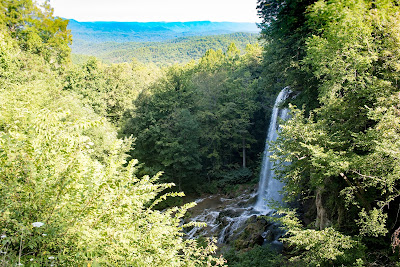
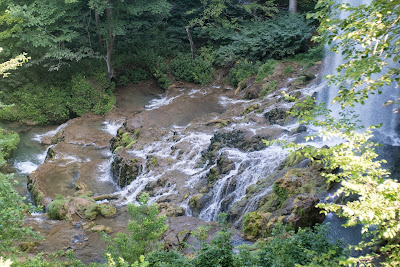

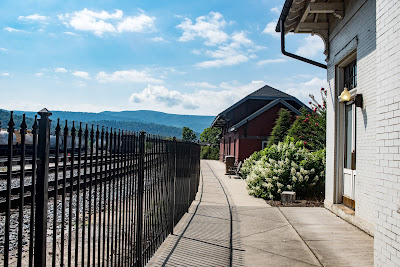
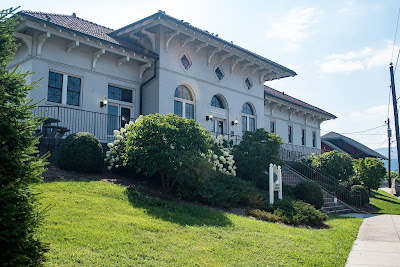
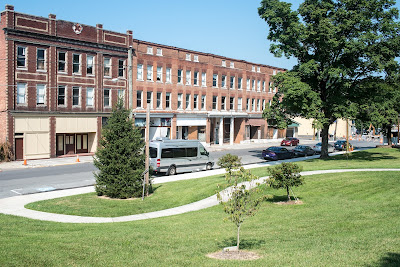
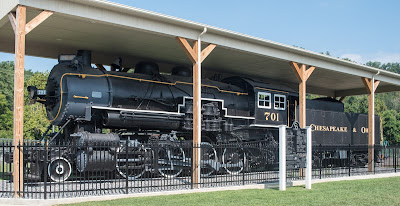
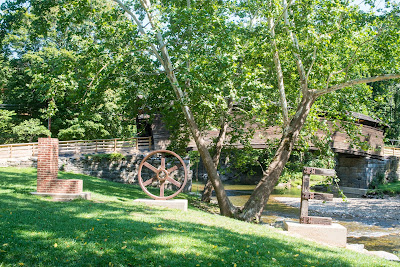
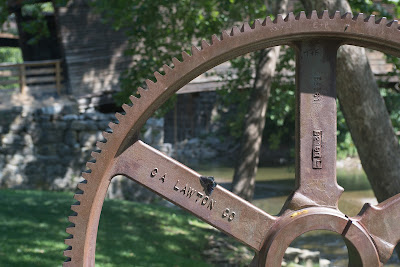
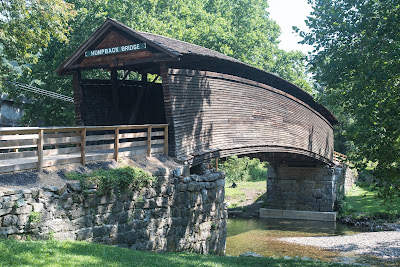
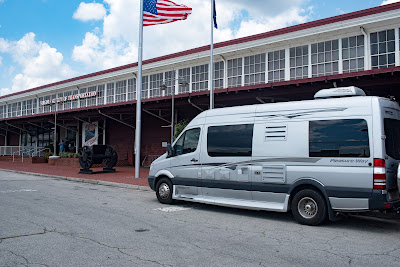
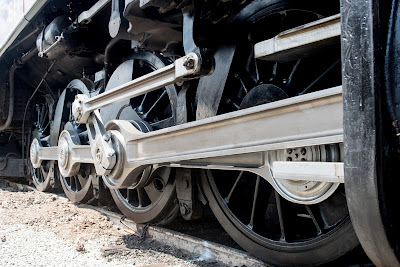
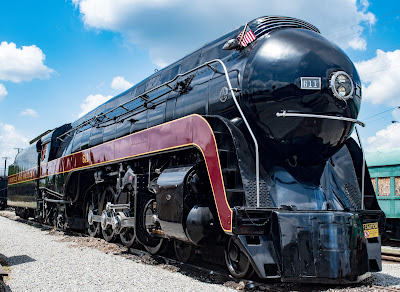

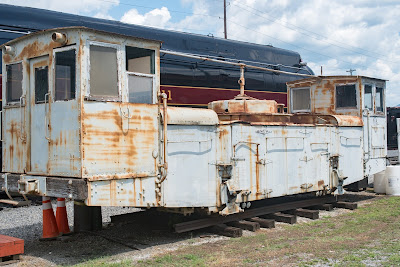
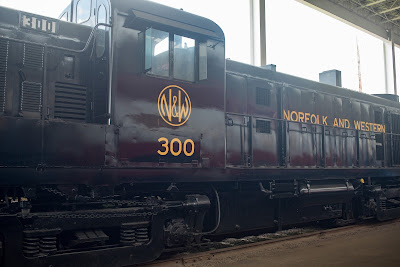
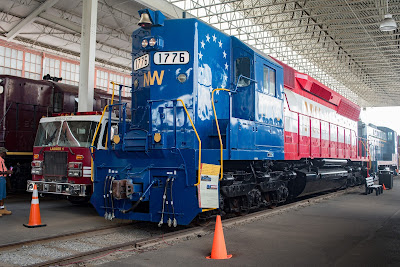
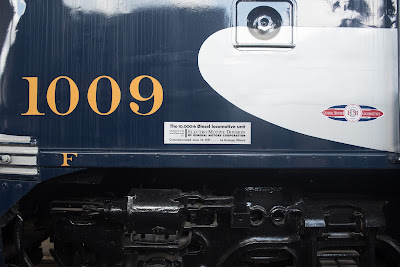
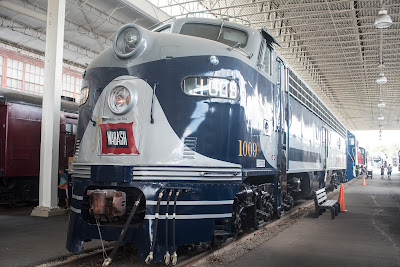
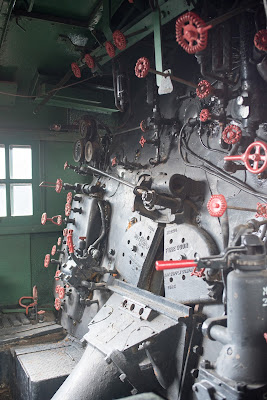
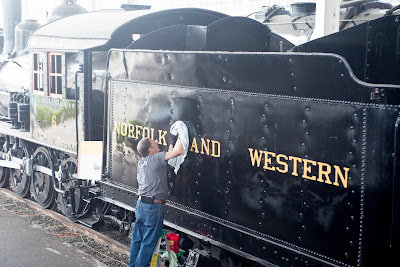
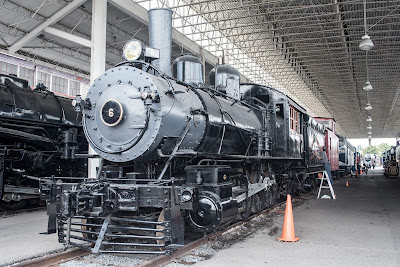
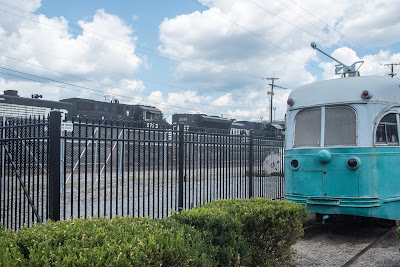
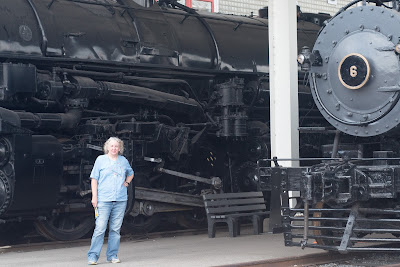
Leave a Reply